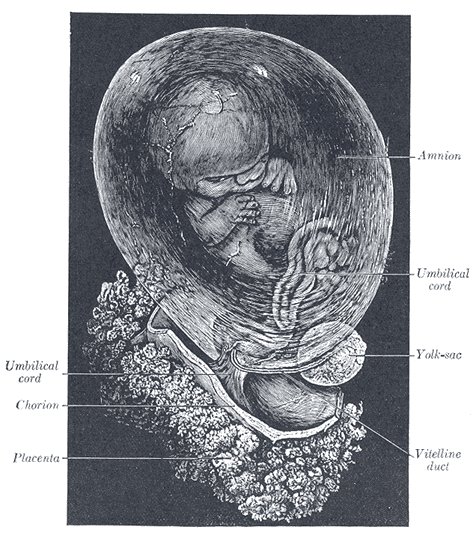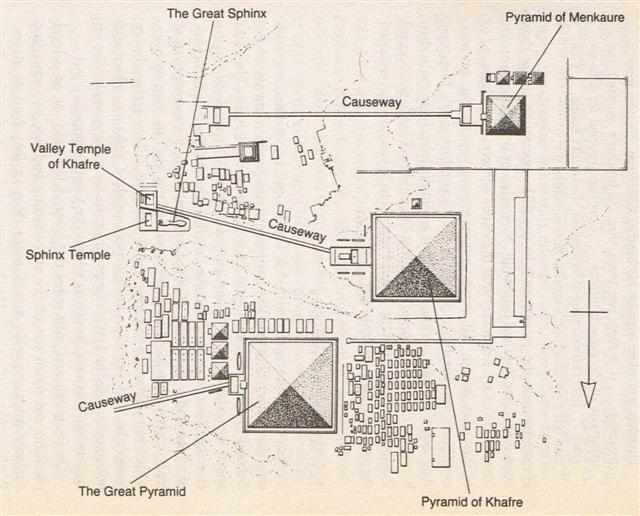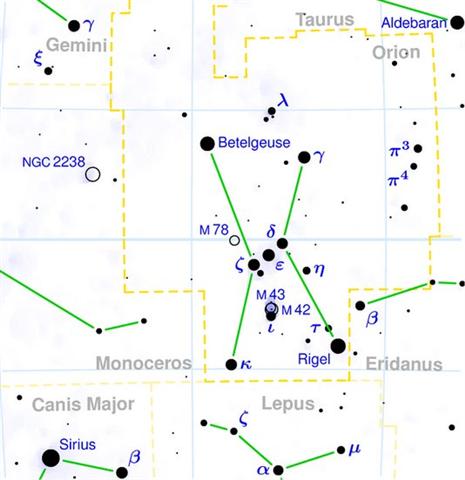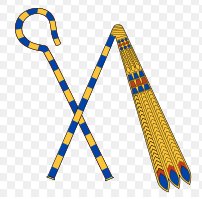The Milky Way river was like a barrier which the Sun, the great Fire in the sky, would be unable to pass. Water quenches fires. But there was a trick. He could sire a new Sun (son) and when the new Sun evolved into his proper shape inside his shell - the Sun was a bird - he would be protected from the watery environment.
We can perhaps interpret Ga1-16 as a bird shell with a growing embryo inside:
The dead father (e.g. Osiris) would rule down in the Underworld and in Egypt the great pyramids of Giza was a graveyard west of the River (with the Nile corresponding to the Milky Way). Although the Milky Way is to the west of Orion instead of to the east. The explanation is that down in the Underworld the forward direction of time leads in the opposite direction, to the horizon in the east where the stars will rise again. Time runs withershins so to say. In ancient Egypt life after death was the predominant theme. Egypt is south of the Mediterranean and the waters of the Nile runs from high up in the southern mountains towards the sea down in the north - in contrast to the situation north of the Mediterranean where up was in the north. By reversing the cardinal directions it should mean Egypt must be like the Underworld, below the sea in the middle. ... Bauval realized that an areal viw of the Giza necropolis would show the Great Pyramid of Khufu occupying the position of Al Nitak, and the Second Pyramid of Khafre occupying the position of Al Nilam, while the Third Pyramid of Menkaure was offset to the east of the diagonal formed by the other two - thus completing what seemed at first to be a vast diagram of the stars.
The 3 great pyramids on the Giza plateau are distributed on the ground in a way which resembles the stars in the Belt of Orion, with Mintaka (δ, the Belt) rising first, followed by Alnilam (ε, String of Pearls) and at the end by Alnitak (ζ, the Girdle). Right ascension increases towards the east in the sky dome, and in our normal star charts right ascension increases to the left. Seen from the center of the Earth the patten on the Giza plateau has Alnitak to the left and Mintaka to the right, precisely as when an observer on the surface of the Earth is looking up to the stars in the night:
The flow of glyphs follows the flow of time and right ascension increases to the right - as if someone far out in space would be looking down on the stars::
... Menkaure was allegedly a much more benevolent Pharaoh than his predecessors. According to legends related by Herodotus, he wrote the following: This Prince (Mycerinus) disapproved of the conduct of his father, reopened the temples and allowed the people, who were ground down to the lowest point of misery, to return to their occupations and to resume the practice of sacrifice. His justice in the decision of causes was beyond that of all the former kings. The Egyptians praise him in this respect more highly than any other monarchs, declaring that he not only gave his judgements with fairness, but also, when anyone was dissatisfied with his sentence, made compensation to him out of his own purse and thus pacified his anger. The Gods however ordained that Egypt should suffer tyrannical rulers for a hundred and fifty years according to this legend. Herodotus goes on: An oracle reached him from the town of Buto, which said 'six years only shalt thou live upon this earth, and in the seventh thou shalt end thy days'. Mycerinus, indignant, sent an angry message to the oracle, reproaching the god with his injustice - 'My father and uncle,' he said 'though they shut up the temples, took no thought of the gods and destroyed multitudes of men, nevertheless enjoyed a long life; I, who am pious, am to die soon!' There came in reply a second message from the oracle - 'for this very reason is thy life brought so quickly to a close - thou hast not done as it behoved thee. Egypt was fated to suffer affliction one hundred and fifty years - the two kings who preceded thee upon the throne understood this - thou hast not understood it'. Mycerinus, when this answer reached him, perceiving that his doom was fixed, had lamps prepared, which he lighted every day at eventime, and feasted and enjoyed himself unceasingly both day and night, moving about in the marsh-country and the woods, and visiting all the places he heard were agreeable sojourns. His wish was to prove the oracle false, by turning night into days and so living twelve years in the space of six. It should be noted that Orion is the only constellation in our zodiac which is completely below the ecliptic:
Although in the skydome Orion is straddling 0º:
The figure of Orion could be depicted in Ga1-29 (possibly also describing the headless body of Rahu), with left arm changed into a flowing river:
The glyph text has the arrow of time towards the right, but the Milky Way river arm comes after Orion. This paradox is solved if we consider how in Polynesia a man who 'falls on his face' means a man who dies. By turning the Rahu man around his right (front) side becomes his left (back) side. We can therefore understand that the headless tagata in Ga1-29 signifies the dead Orion. This was when the Sun reached κ Aurigae:
Beyond κ Aurigae remained only the 'whip' (ψ) stars:
| |||||||||||||||||||||||||||||||||||||||||||||||||||||||||||||||||||||||||||||||||||||||||||||||||||||||||||||||||||||||||||||||||||||||||||||||||||||||||||||||||||||||||||||||||||||||||||||||











